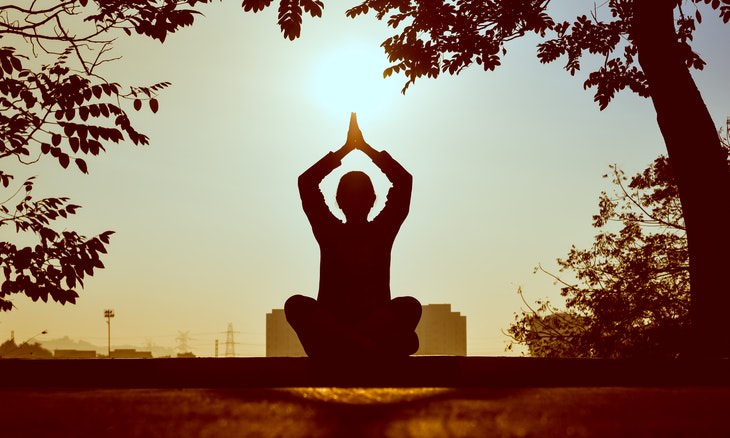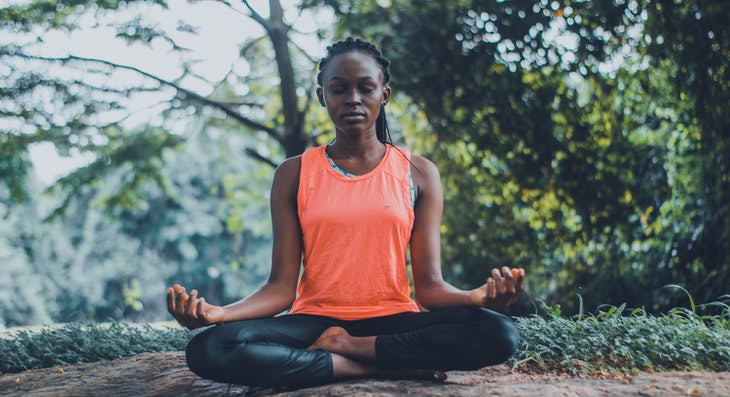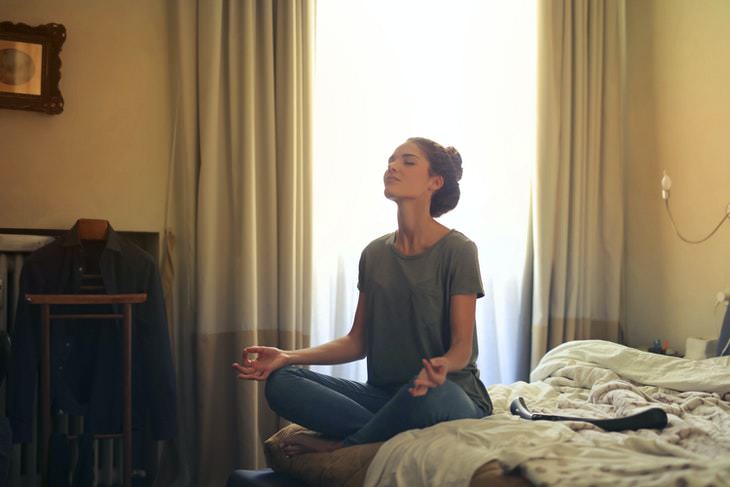Beginner’s Tips
Before we teach you how to complete a body scan step by step, we wanted to give you several tips that will help you get the most out of a body scan. First of all, the setting - we recommend starting in a quiet and calm place that will be conducive to introspection, but with time, you’ll be able to meditate anywhere, be it your home, nature, workplace, or your daily public transportation commute.
We’d encourage you to meditate every day, as this way, you’ll learn how it works faster, and so, you’ll see the effects sooner. Don’t be discouraged if the first few times you don’t see an immediate effect of the meditation. Like any skill, it takes time to cultivate. Think of meditation as an exercise for your mental self. Just like any exercise, it requires repetition and practice for you to notice any beneficial changes.
Luckily, unlike exercise, people typically start observing the effects of meditation much sooner - in just a few weeks of daily practice, you’ll start experiencing better focus, feeling less stressed, and having a more positive outlook on the events going on in your life.
How to Practice Body Scan Meditation
This meditation practice takes anywhere from 5-15 minutes to a full hour, but the basic steps are the same. Here they are:
1. Get in a comfortable position: e.g. lie down or sit in a stable position, be it on the floor, in a chair, or with your back against the wall.
2. Slowly close your eyes and bring your attention to your breath. Observe how it feels when you breathe in and out, how your chest expands when you fill your lungs with air, and how it tightens when you push the air out of the lungs.
3. Choose a point in your body where you’d like to start. Traditionally, you want to start on the top of the head and move down your whole body, but you can also start from any other body part. Continue to breathe deeply and bring your attention to that spot.
4. Check if you feel any tension or pain in the body part you chose. For example, if you choose your head, do you feel that it’s heavy? Does breathing in make you a bit dizzy? Are your facial muscles tense or relaxed? Are you frowning or smiling? Open your mind to any sensations that may come, be they pleasant, painful, or irritating.
5. Gradually shift your attention down, as if you’re meticulously scanning each body part inch by inch. Spend time (20sec - 1minute, on average) to experience the sensations in each body part - e.g. from your head down to your neck, shoulders, etc.
6. If you find a feeling of pain or discomfort at any point of the body scan, notice it, and accept any feelings it may cause without any judgment, frustration, or anger. Allow these feelings to go away on their own, the same way they appeared on their own. Observe how, with each breath, the anger, pain, and tension slowly melt away.
7. Move down to the next area and visualize in your mind’s eye how your focus shifts from one point to another, continuing the scan until you’ve given every body part, every cell in your body a moment of your attention.
8. If your mind drifts away at any point in the scan, don’t worry and don’t feel bad, it is bound to happen because your unconscious self is trying to avoid facing the unpleasant emotions and sensations. Simply return where you left off and continue.
9. Once you’re done, visualize your entire body, see how it feels to breathe now compared to when you started. Breathe deeply a few more times, and then slowly open your eyes and find yourself in your environment, refreshed and awake.
Bonus: An easy 15-minute audio body scan meditation to follow:




